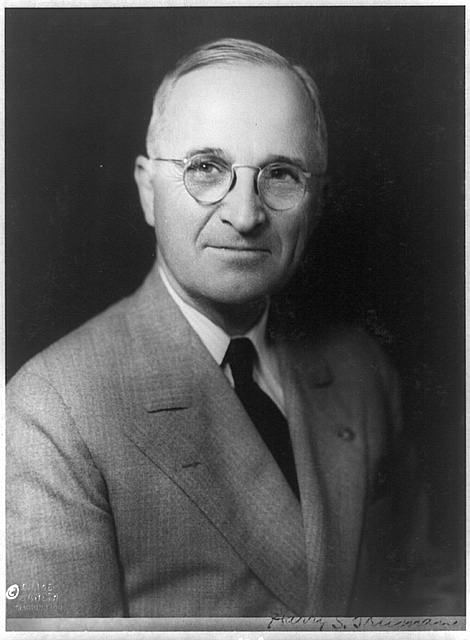When Harry S. Truman left office in January 1953, his approval ratings were among the lowest of any modern U.S. president. Gallup polls at the time recorded his approval at a dismal 32%, and at one point, it dipped even lower, reaching 22% in 1952. His presidency was marred by controversies, the Korean War, economic struggles, and fierce political opposition. Yet, over the decades, Truman’s legacy has undergone a remarkable transformation. Today, many historians and scholars rank him among the top 10 presidents in American history. How did this shift happen, and what can we learn from Truman’s journey from unpopular to historically respected?
Truman’s Approval Ratings: Then vs. Now
At the height of his presidency, Truman’s approval ratings fluctuated dramatically. Here’s a breakdown of key moments:
- 1945 (Assuming Office) – After Franklin D. Roosevelt’s sudden death, Truman took over with an approval rating of 87%, largely due to the public’s respect for his predecessor and optimism following World War II’s end.
- 1948 (Re-election Year) – After being written off as unelectable, Truman shocked the nation by defeating Thomas Dewey. His approval rebounded to 57% in the months after his victory.
- 1950-1952 (Korean War Years) – As the Korean War dragged on without a decisive victory, and scandals plagued his administration, his ratings plummeted, reaching a low of 22% in 1952.
- Post-Presidency Perception (1970s-Present) – As time passed, historians began reassessing Truman’s leadership, particularly his Cold War strategy and domestic policies. Today, he is often ranked among the top 5–10 U.S. presidents in many historical surveys.
According to C-SPAN’s 2021 Presidential Historians Survey, Truman ranked 6th overall, placing him ahead of figures like Ronald Reagan, Dwight D. Eisenhower, and John F. Kennedy.
Why Was Truman So Unpopular?
Several key factors contributed to Truman’s low approval ratings during his presidency:
1. The Korean War
When North Korea invaded South Korea in 1950, Truman led the U.S. into war under the banner of stopping Communist expansion. But as the war dragged on, with tens of thousands of American casualties and no clear victory, public frustration grew. The firing of General Douglas MacArthur, a popular military leader, further hurt Truman’s standing.
2. Economic Struggles & Inflation
Post-war inflation spiked, leading to labor strikes and economic instability. Truman’s efforts to control prices and wages led to tension with both business leaders and labor unions, further damaging his popularity.
3. Scandals & Political Attacks
While Truman himself was never accused of corruption, several scandals emerged within his administration, including favoritism in government contracts and tax evasion cases involving high-level officials. The Republican opposition capitalized on these issues, branding his administration as riddled with incompetence.
4. A Shift in Political Winds
By 1952, Americans were looking for a fresh start. Republican Dwight D. Eisenhower, a World War II hero, offered a stark contrast to Truman, who by then was seen as a relic of the Democratic New Deal era.
The Long-Term Historical Perspective
Despite his unpopularity at the time, Truman’s leadership is now viewed as decisive, pragmatic, and forward-thinking. Here’s why:
1. Cold War Leadership
Truman laid the foundation for America’s Cold War strategy. His Truman Doctrine (1947) committed the U.S. to containing communism, influencing foreign policy for decades. The Marshall Plan (1948) helped rebuild war-torn Europe, strengthening Western alliances.
2. Civil Rights Leadership
Though often overlooked, Truman made historic moves in civil rights. His Executive Order 9981 (1948) desegregated the U.S. military, setting the stage for later civil rights advancements.
3. The Economy & The Fair Deal
Truman’s domestic policies, known as the Fair Deal, expanded Social Security, promoted housing projects, and sought national healthcare reforms—many of which influenced later policies under Lyndon B. Johnson’s Great Society.
4. Presidential Accountability
Unlike many politicians, Truman took full responsibility for his decisions, famously placing a sign on his desk that read, “The Buck Stops Here.” His willingness to make difficult choices, even at great political cost, has earned him posthumous respect.
What Can We Learn From Truman’s Rise in Historical Rankings?
1. Unpopular Decisions Can Be the Right Ones
Truman made tough calls—firing MacArthur, integrating the military, standing firm in Korea—that hurt him politically but proved wise in hindsight. Leaders who focus on long-term impact rather than short-term approval often leave stronger legacies.
2. Crisis Leadership Shapes Legacy
Truman took office at a pivotal moment in history. His ability to navigate World War II’s aftermath, the Cold War’s beginning, and domestic challenges demonstrated resilience under pressure—a quality now admired by historians.
3. Time Provides Perspective
Presidents are often judged harshly in the moment but reassessed with historical distance. Truman’s presidency, initially seen as chaotic and controversial, is now considered one of the most consequential of the 20th century.
4. Integrity Matters
Though Truman faced immense criticism, he maintained a reputation for honesty and directness. His famous quote, “I never gave anybody hell. I just told the truth and they thought it was hell,” underscores his straightforward leadership style.
Harry Truman’s presidency serves as a powerful case study in how public perception can change over time. Once deeply unpopular, his approval ratings were among the lowest of any modern president. But decades later, his decisive leadership in foreign policy, civil rights, and economic recovery has earned him widespread historical respect. His story reminds us that true leadership is not about seeking popularity—it’s about making the tough decisions that stand the test of time.
